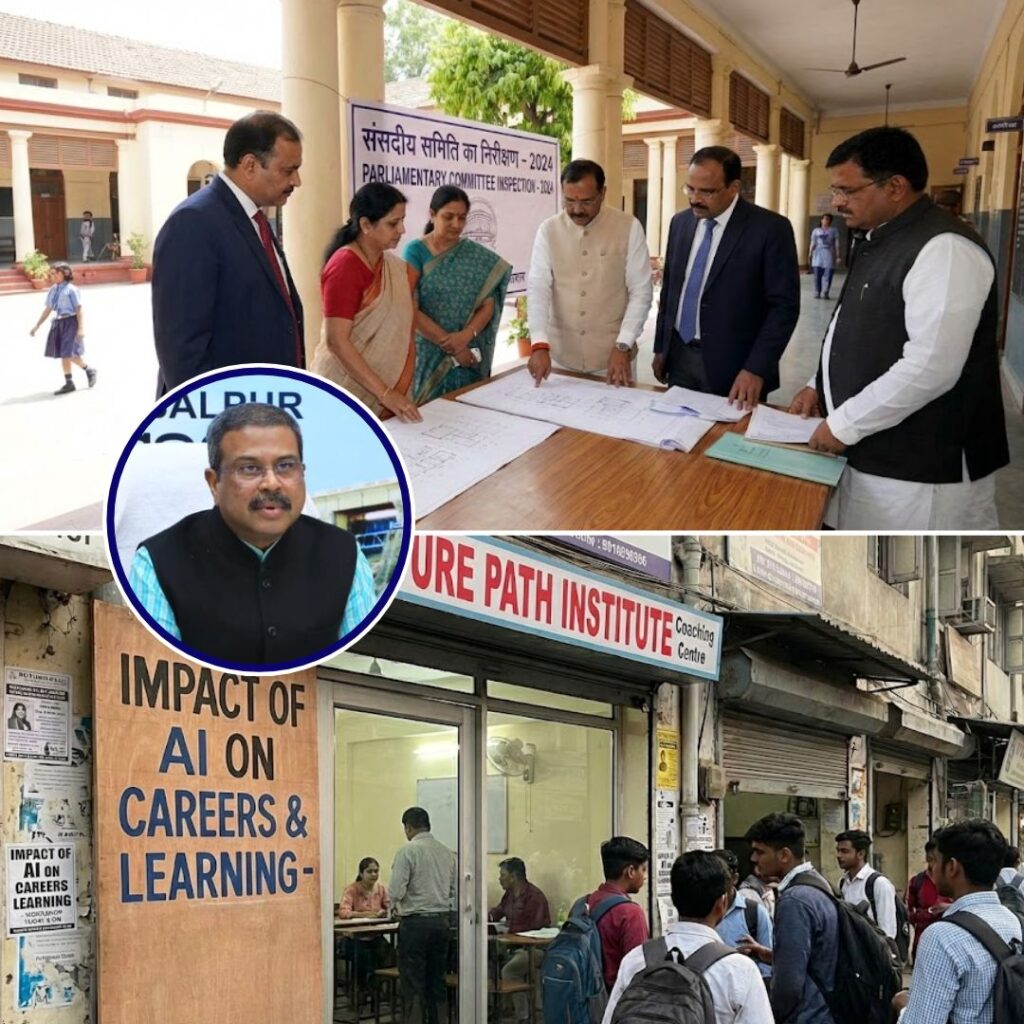India is rapidly emerging as a fast-growing economic powerhouse and is poised to become the world’s third-largest economy soon, Finance Minister Nirmala Sitharaman announced on Tuesday. Speaking at the Delhi School of Economics, she highlighted India’s rise from the tenth largest economy in 2014 to currently the fifth, with the third position within reach due to sustained economic strength and reforms.
“What is making us literally stand out is the fast movement from the tenth largest economy in 2014 to fifth and the fourth, and now sooner, probably to the third,” she said.
Sitharaman also noted the government’s success in lifting 25 million people out of multidimensional poverty and expressed confidence in meeting the fiscal deficit target of 4.4% for the current financial year. Officials emphasised ongoing efforts to strengthen the banking sector, improve fiscal discipline, and implement structural reforms as key drivers behind this growth trajectory.
Economic Progress and Strategic Significance
India’s transformation from the tenth-largest economy in 2014 to the fifth today marks a remarkable rise on the global stage, with the third position within reach soon. Sitharaman highlighted that India’s strategic geographical location, demographic advantages, and economic strength contribute to this ascent.
She underscored that while India is not yet a developed country, the ambitious goal of ‘Viksit Bharat 2047’, a developed India by its centenary year, is guiding policy and growth strategies. The Finance Minister praised sustained reforms, including banking sector clean ups and customs regulations overhaul, as pivotal to India’s economic resilience and future potential.
Inclusive Growth and Fiscal Discipline
A notable achievement cited by Sitharaman is the lifting of 25 million people out of multidimensional poverty, reflecting progress beyond aggregate GDP figures to tangible social impact. She further emphasized improvements in public sector banks, reversing the legacy of the “twin balance sheet problem” left by earlier administrations.
The fiscal deficit target of 4.4% of GDP for 2025-26 remains on track, signalling disciplined fiscal management despite global uncertainties. Data for the first half of the financial year showed the deficit well contained at 36.5% of the full-year estimate, supporting sustainable economic growth.
Facing Challenges with Innovation and Policy
Sitharaman pointed to emerging challenges like technological disruption, artificial intelligence, and environmental sustainability as key areas requiring India-centric research and new policy frameworks.
The government aims to base reforms on robust data and innovation, ensuring that growth is sustainable, inclusive, and future-ready.
Strengthening domestic models to suit India’s unique context remains a priority in maintaining long-term momentum. These measures aim to support the continued rise of India in the international economic hierarchy.
The Logical Indian’s Perspective
India’s economic journey demonstrates the power of resilience, strategic vision, and collective effort. Celebrating this ascent must also come with a commitment to inclusivity, environmental care, and equitable progress. The pursuit of becoming the world’s third-largest economy offers a chance to redefine success by balancing prosperity with social and ecological responsibility.
News in Q&A
1. What is the current status of India’s economy globally?
India has risen from the tenth-largest economy in 2014 to the fifth today and is on track to become the third-largest economy globally by around 2028, surpassing Germany and Japan.
2. What factors are driving this rapid economic growth?
Strong macroeconomic fundamentals, demographic advantages with a growing young population, banking sector clean-ups, increased urbanisation, infrastructure expansion, and reforms improving ease of doing business are key drivers.
3. How has the government contributed to this progress?
The government has implemented structural reforms, improved fiscal discipline targeting a 4.4% deficit fiscal year 2025-26, reduced poverty by lifting 25 million people out of multi-dimensional poverty, and strengthened public sector banks.
4. What are the challenges that India faces in maintaining this growth?
Challenges include managing technological disruption, climate change impacts, sustaining fiscal discipline amid global uncertainties, and ensuring inclusive growth that benefits all sections of society.
5. What future economic vision guides India’s development?
India is guided by the ‘Viksit Bharat 2047’ vision to become a developed country by 2047. The focus includes sustainable growth, innovation-driven policies, infrastructure development, and an emphasis on social equity.
Delhi School of Economics (DSE) will have an open invitation every year to come up with a set of ideas that you would want to see in the Union Budget.
— Nirmala Sitharaman Office (@nsitharamanoffc) November 4, 2025
Let this practice happen every year from now. And that's with the hope that we will have ideas, from young minds who have… pic.twitter.com/cDG6zwb1ms












